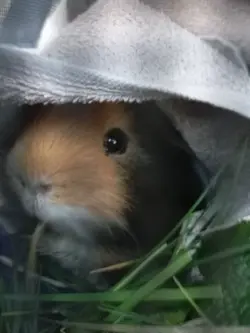Hi
I am very sorry
A stronger diuretic like frusol (not sure whether it is a UK brand name or not), which contains furosemide but also some citric acid and some other stuff is helpful in stimulating the regular flushing of the bladder with stronger pees so there is less of a risk of bacteria and carbohydrates building up in the bladder.
Bladder stones are actually not made of calcium but of carbohydrates (only very rarely of oxalates), hence the recommendation to drop pellets from the diet and replace them with more veg or fresh forage in order to cut out any useless low fibre carb fillers (which make up the biggest part of pellets) from the diet.
Not being a good natural drinker - and there is nothing you can do about that - is one of the contributing factors to stones. Big drinkers usually don't get stones unless their diet is grossly overladen with calcium. However, overhydration is a much greater killer than dehydration, so you cannot just squirt plenty of water into an unwilling piggy. The normal range of drinking varies enormously individually.
Feeding more fresh, watery and mildly diuretic veg is much more effective. Fresh growing grass, dandelions (all parts; they are a good natural diuretic) and any fresh forage is great if you can get it safely when growing. Cucumber and lettuce may do in the other months.
What pellets contribute to a piggy diet is protein, so you may feed - just a little! - of something else, like a pea flake a day instead. Please note that pea flakes are not a treat that should be fed unlimited; they still count towards the overall diet.. Like with everything, it is more a matter of quantity and frequency of feeding.
Protein: Pellets and Pea Flakes
Veg, fresh and dry forage, pellets and any treats all together replace the supplementary role of wild forage in the diet guinea pigs have evolved on; they make about just a bit less than a quarter of the daily food intake (the rest is grass fibre in the form of hay or fresh growing unsprayed and dog-pee grass). All the supplementary foods should be rather seen as a single food group where you are free to shift between the various sub-groups.
Without pellets, you can feed a little kale or collard greens more often - they contain less calcium weight for weight than pellets (even no added calcium ones). You do not want to make the mistake of going too low calcium in your diet, which is as detrimental as too high. There is a soft spot but it is just slightly different for every owner.
Please also review your water. More calcium and minerals come into the diet by water (especially hard water) and pellets than by any other food group. Because everybody has different water, pellets, access to local veg and hay etc. there is unfortunately no diet recommendation that works for everybody. The USA and Canada are mainly soft water countries while the UK is a mainly hard water country, all with regional variations. When we tried US recommendations for a balanced diet about a dozen years ago, we ended up with a spate of bladder stones on UK based forum...
Protein: Pellets and Pea Flakes
For a piggy to develop bladder stones, there are usually several contributing factors coming together. Unfortunately, diet is generally our only, rather clumsy and not fast acting instrument we have. It usually takes several weeks for any changes to come through.
I am sorry if this post is leaving you more bewildered but diet is very much a minefield and a constant compromise because there are no clear 'good' and 'bad' foods that should be fed in a certain amount. It is all about the balance that works for you.
Please make any major diet changes gradually over the course of a week in mounting quantity in order to avoid tummy upsets (diarrhea or bloating) and to allow the digestive bacteria to grow more of the specialists for the foods you are introducing at pace.


